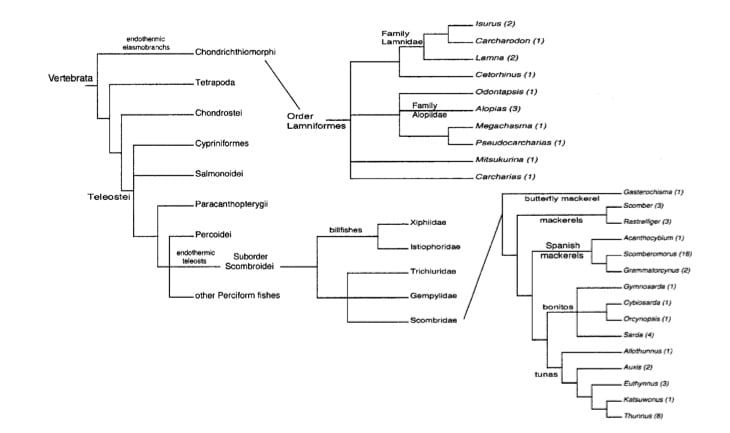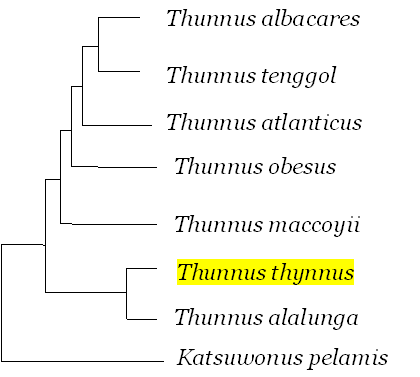The purpose of this paper was to simulate various scenarios based on population data and predict the fate of Atlantic bluefin tuna populations.
Keywords:
- Biomass: The total mass of organisms in an area or volume.
- Spawning Stock Biomass: The combined total of all individuals within a fish stock that are capable of reproduction.
- Temporal: of, or relating to, time.
- Recruitment: The production rate.
- Individual relative fecundity: The personal ability to reproduce and create offspring in large numbers.
- Stochastic modeling: A model type that predicts outcomes while taking into account a degree of randomness or unpredictability.
- Parameterize: To describe or represent in terms of parameters.
- Hockey stick model: A model that starts flat but will then diagonally go up or down, and resembles a hockey stick.
Hypothesis: The adult population of bluefin tuna will decrease 75% in 2011 compared to 2005, and the quotas for fisheries would allow for this to occur.
This experiment utilized data on fishery assessments, population trends, and from International Commission for Conservation of Atlantic Tuna (ICCAT). This data was then placed within an age-structured stochastic model and applied to five scenarios that would bring accurate predictions towards bluefin tuna populations. These simulations had dire results; for example, scenario 2 had a 50% chance of recovery before the 2022 recovery plan goals. The overall biomass trend is that they would decline rapidly and at a dangerous rate.
The prediction for the biomass trend is that the population would fall 90% by 2022. Thus, making an ecological and fishery collapse. Even if a ban was put in place in 2008, the population would still hit record lows. Knowing that the hockey stick model follows more closely than the Ricker model is not any more promising given that it shows rapid decline. This trend is largely due to the over-fishing of the Atlantic bluefin tuna population that goes beyond the recommended quotas needed for recovery. They end up catching all of the adult tuna, which decreases the ability to recruit more into the population. Other indications of this happening can be seen in how the demographics for the fish have changed in terms of age and reproduction-ability (more young, premature fish are left). They call for a new recovery plan that is much more strict with the fishing quotas and enforceability, so that the population of tuna can recover over the years to avoid the three generation collapse.
These results are interesting because we can now compare the findings in 2009 to present day bluefin tuna populations to see if the prediction was accurate. Given that Atlantic bluefin tuna are still endangered and we still face over-fishing issues, the prediction seems to be accurate so far. These findings have a point when it comes to more than just this species of fish. It further points out how not enforcing strict quotas to encourage recovery, and over-fishing, is destroying many species. This model-based prediction of the bluefin tuna populations is just a piece of the puzzle, a consequence for these actions and for the lack of.
Citation:
Mackenzie, B. R., Mosegaard, H., & Rosenberg, A. A. (2009). Impending collapse of bluefin tuna in the northeast Atlantic and Mediterranean. Conservation Letters, 2(1), 26–35. doi: 10.1111/j.1755-263x.2008.00039.
https://conbio.onlinelibrary.wiley.com/doi/full/10.1111/j.1755-263X.2008.00039.x

 figure 3:
figure 3:





